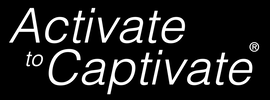 As a presentation coach, one of the questions I get asked the most is, “What do I do with my hands?” While there are plenty of power poses and effective body language techniques I could explain, my first response is a little different. If you are worried about your hands, it means you are worried about YOU. How you look, how you are being perceived, how you are portraying the information. A presentation is not about you. It is about the audience. It is about trying to do something to the audience. If you are worried about yourself, it means you’ve shifted the focus inward. You need to redirect that attention out again. Figure out what you are trying to do with your information. Why you are saying it? Do you want to excite your audience? Do you want to rattle them? What effect do you want this content to have? While there are specific motions and poses people can do to help maximize the effectiveness of a point, you can’t start there. Presentations can become too choreographed and staged. I want to listen to the genuine you. That can only happen if you start by thinking about the audience first. After you connect with them, you can work on making small moments stand out. 8/12/2018 05:19:17 pm
What do you say to people who do not ask about their hands, but when they present they are doing something very distracting with them? (Like fiddling with a marker, cracking their knuckles, or just waving them around.) I have many students who fall into this category. Thanks!
Bri McWhorter
8/17/2018 04:10:54 pm
Those nervous ticks can be distracting. It means they have extra energy that is finding a way to leak out. In order to break that habit, have them refocus that energy in other ways. For example, have them put it on their voice (speak louder, have more passion, etc), you can have them move around so it goes out of their feet, or try to give them a task to focus on. For example, have them draw out their ideas on the whiteboard. Once they start to break the habit, it stops being their default activity. It's a process, but one that helps in the long run. 8/18/2018 07:59:18 am
Thanks very much! I really like that answer. I will incorporate that into my suggestions next time I have a class do presentations. Comments are closed.
|
AuthorBri McWhorter is the Founder and CEO of Activate to Captivate. Categories
All
Videos
Archives
June 2024
|
Click to Contact
© 2014-2024 Activate to Captivate, LLC
All Rights Reserved
All Rights Reserved

 RSS Feed
RSS Feed
